Modern applications use highly secure and thus deliberately slow algorithms for verifying passwords. For this reason, the password recovery process may take a lot of time and require extreme computational resources. You can build your own powerful cluster to accelerate brute-force attacks, but if you only need to recover a password every once in a while, maintaining your own cluster may not be the best investment. Cloud services can help do a one-off job faster. For a long time, Elcomsoft Distributed Password Recovery had supported Amazon cloud services with automatic deployment on Amazon’s powerful GPU-accelerated servers. The latest update brings support for Microsoft Azure, adding the ability to automatically deploy Password Recovery Agents to virtual machines created in Microsoft Azure. In this article I will describe the deployment steps.
First log in to your Azure account and launch Azure Portal. All virtual machines with agents must be included in one resource group. Please note that agents will be installed to each machine in that particular resource group. If you don’t have an empty resource group, you’ll have to create it:
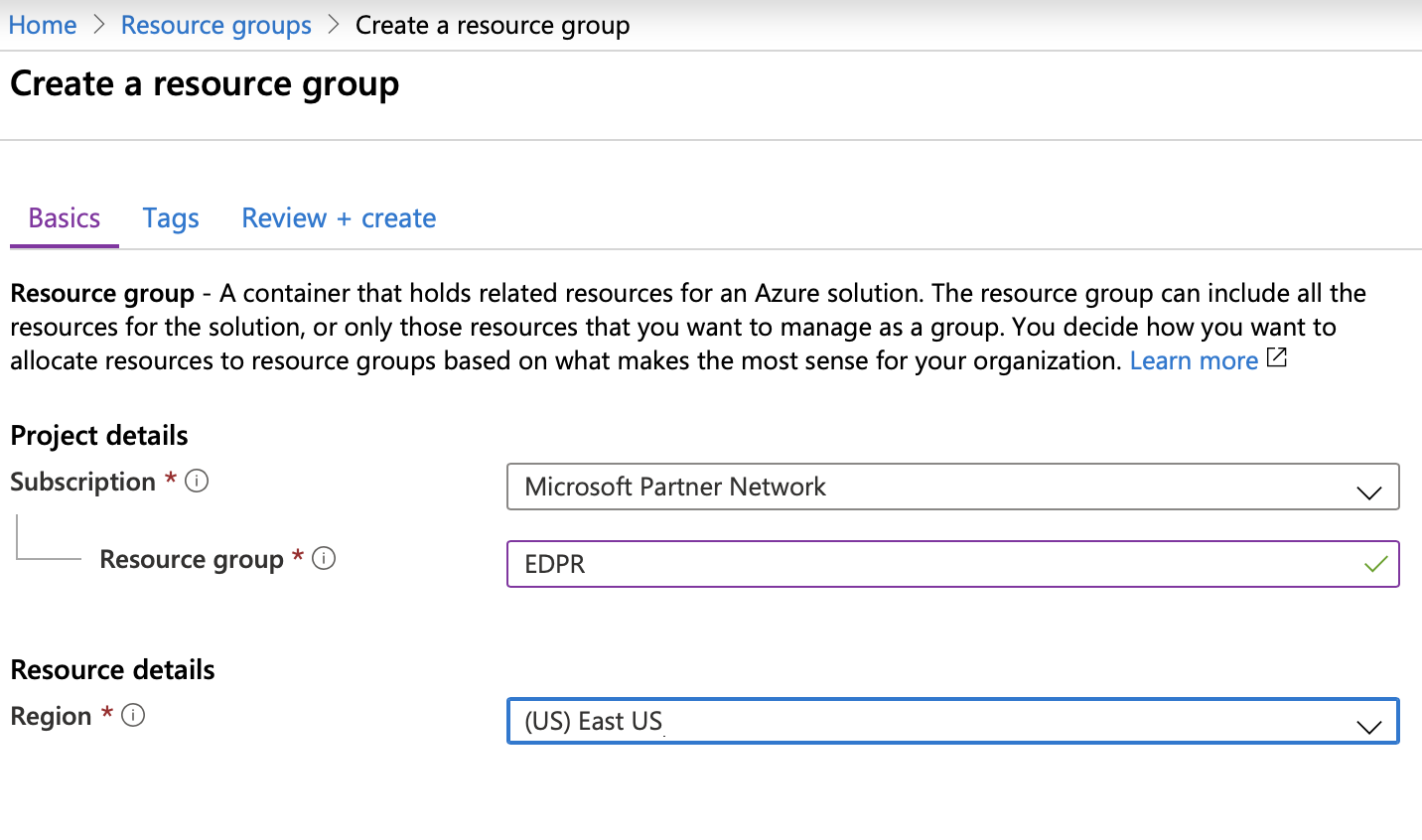
Please ensure that the desired virtual machine sizes are present in the selected region. Virtual machines with GPU acceleration are optimal for the password recovery. The most powerful machines equipped with Tesla V100 GPU are in the Azure NCv3-series. You can also use any other GPU powered series such as the NC, NV, NVv3 and so on. These virtual machines can be used on-demand, meaning you won’t pay for them while they are stopped (except a small storage fee). For the purpose of password recovery, all machines must run Windows OS. We recommend using Windows Server 2012 as the most affordable solution. All virtual machines must be in the same region as the created storage group.
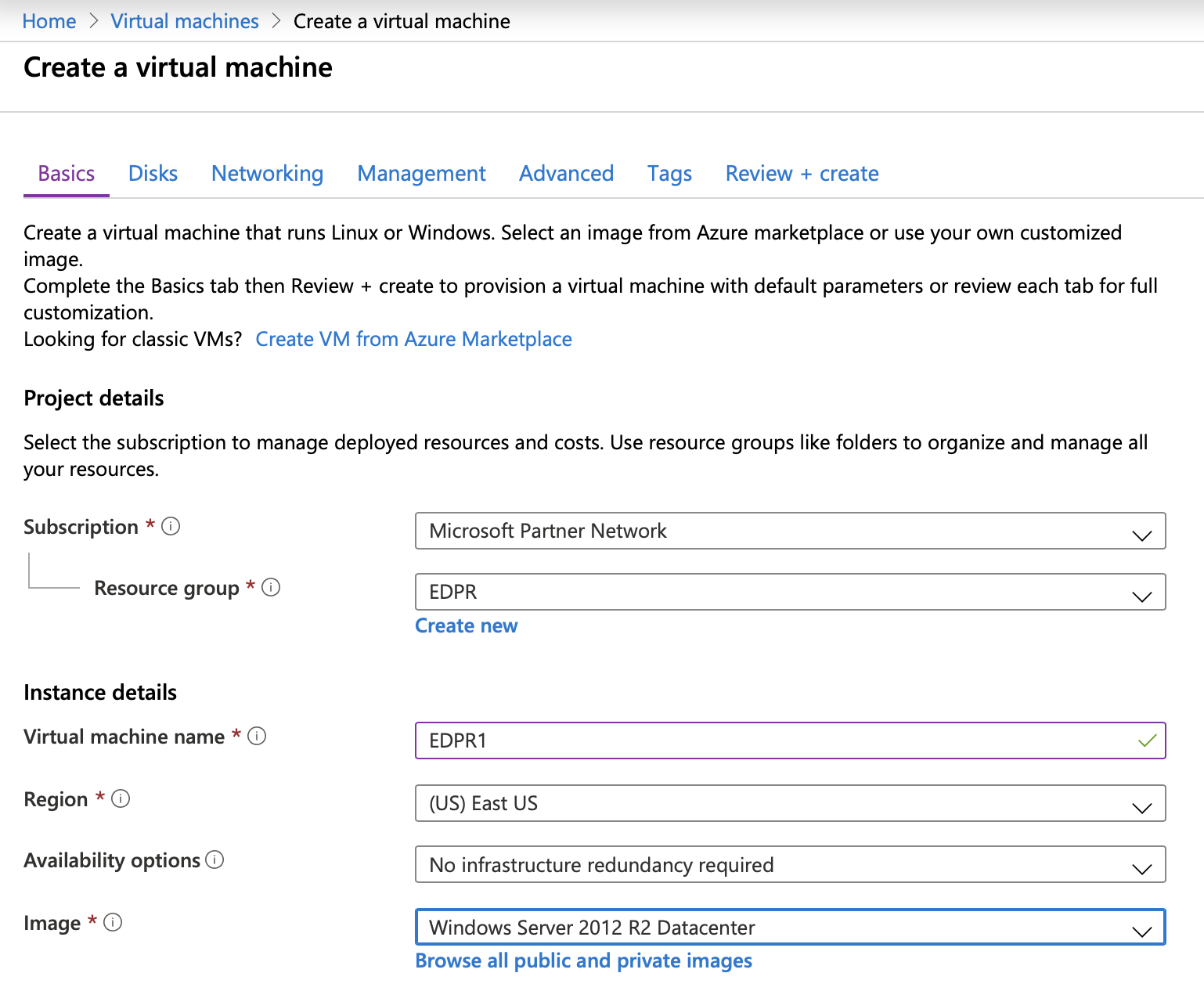
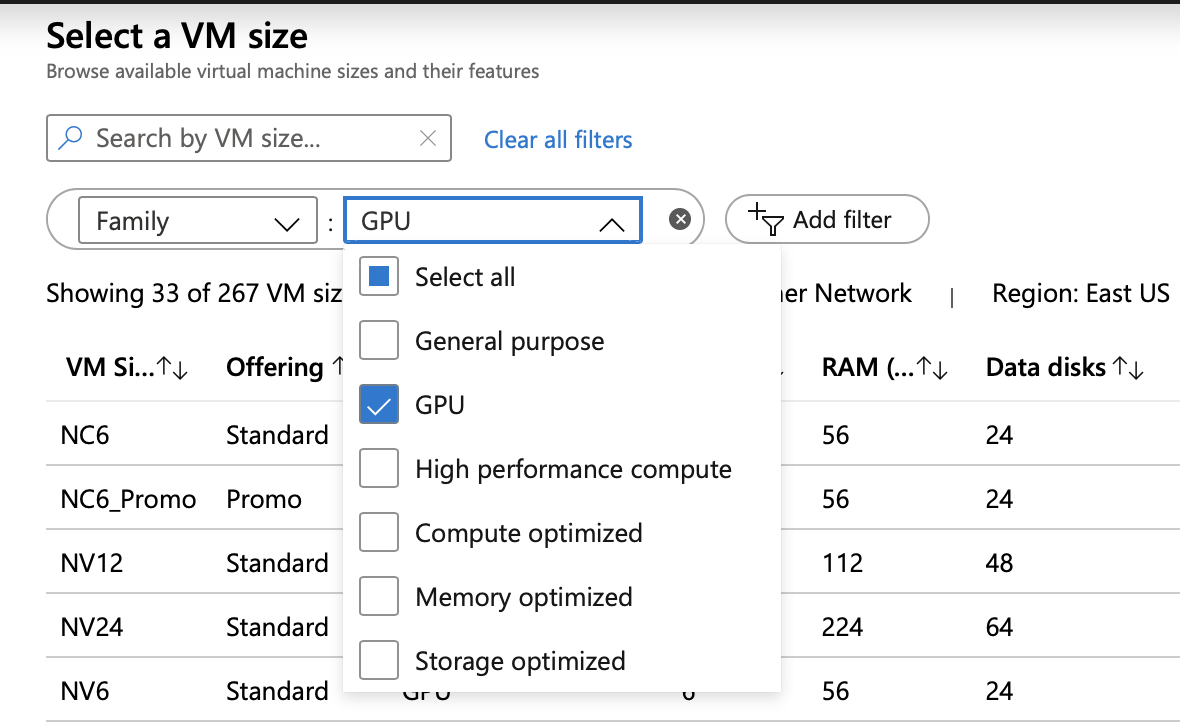

Your virtual machine should look like this:
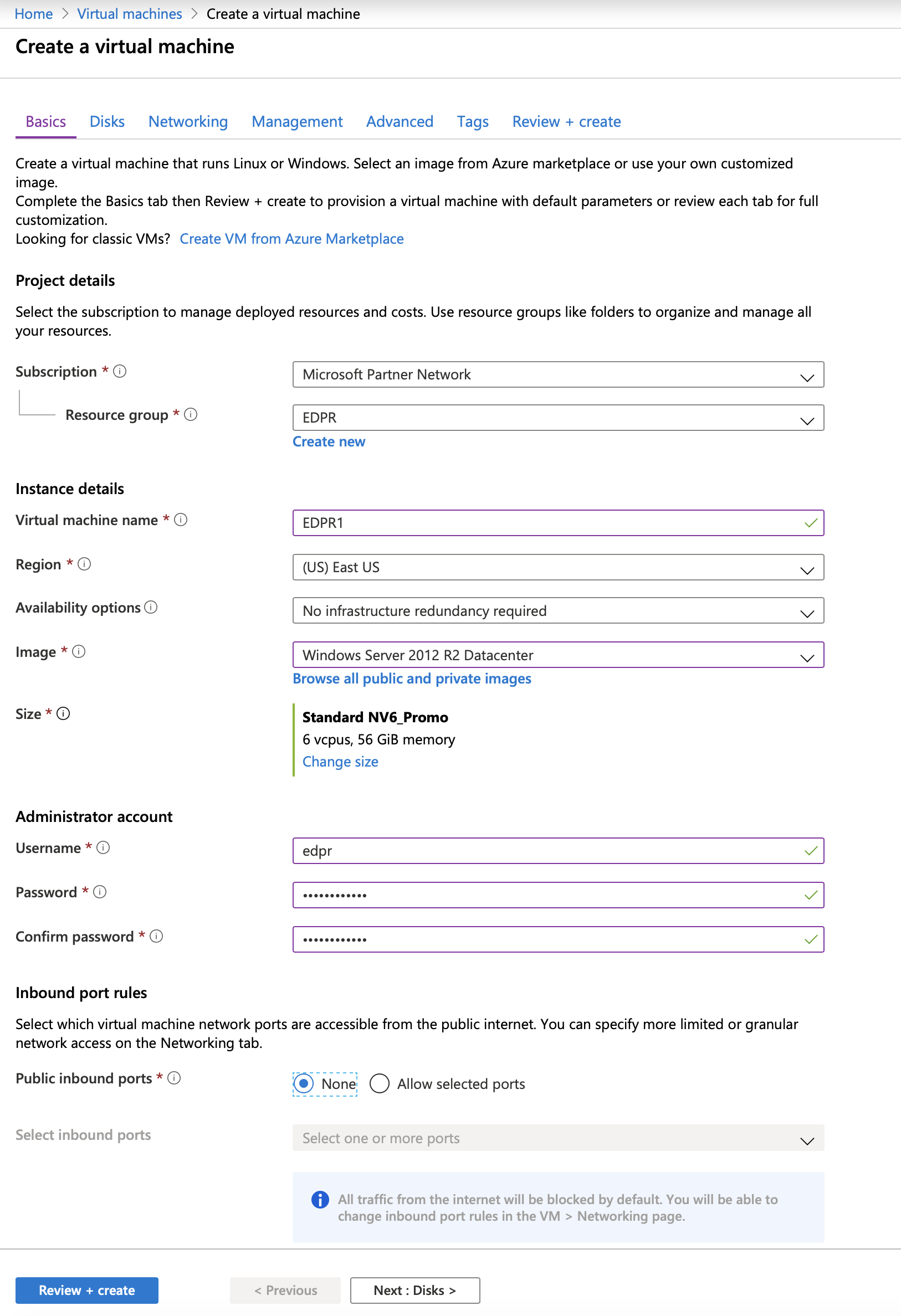
We recommend to select “Standard HDD” storage because storage type does not affect the performance of brute-force attacks. At the same time, HDD-based storage is considerably less expensive compared to SSD-based one.
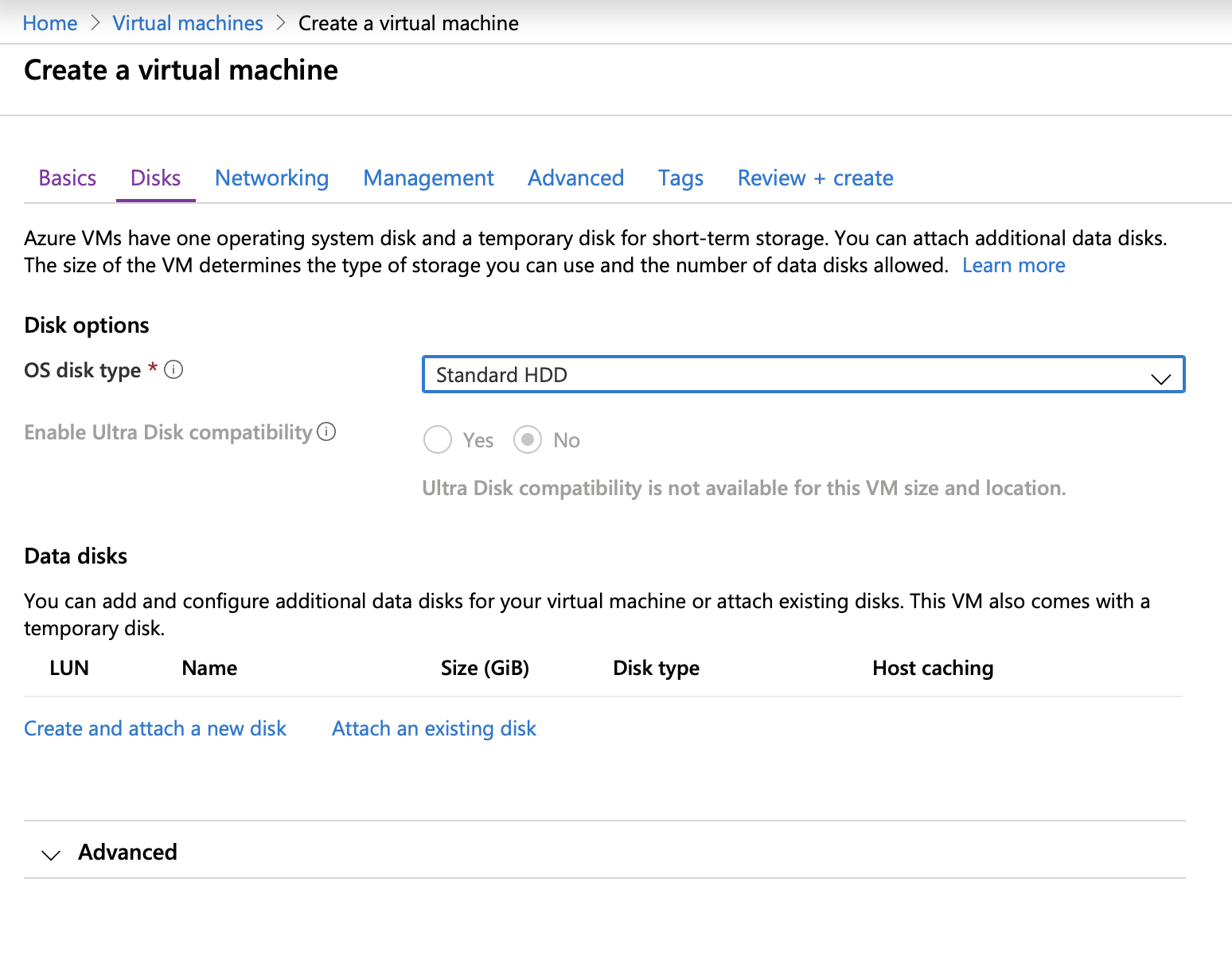
All virtual machines must be in the “Running” state before installing the agents:
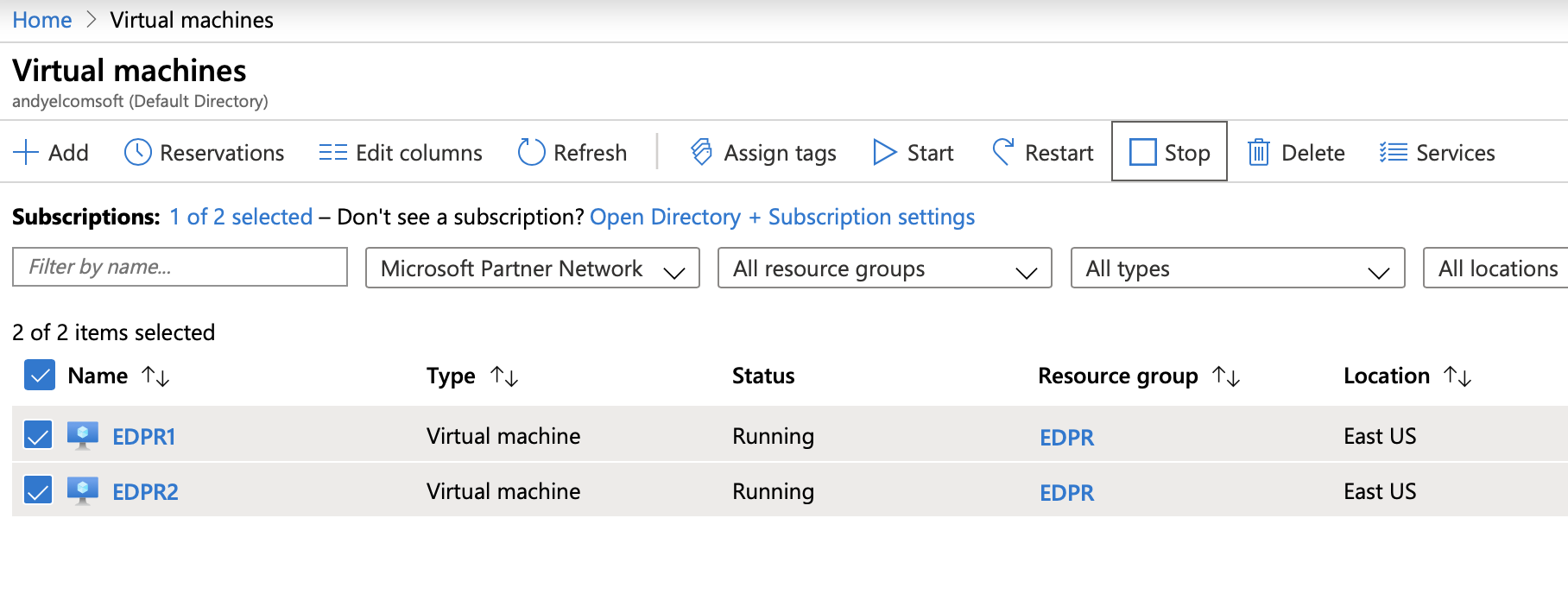
The next step is installing Elcomsoft Distributed Password Recovery with the “Agent Azure deployment” option:
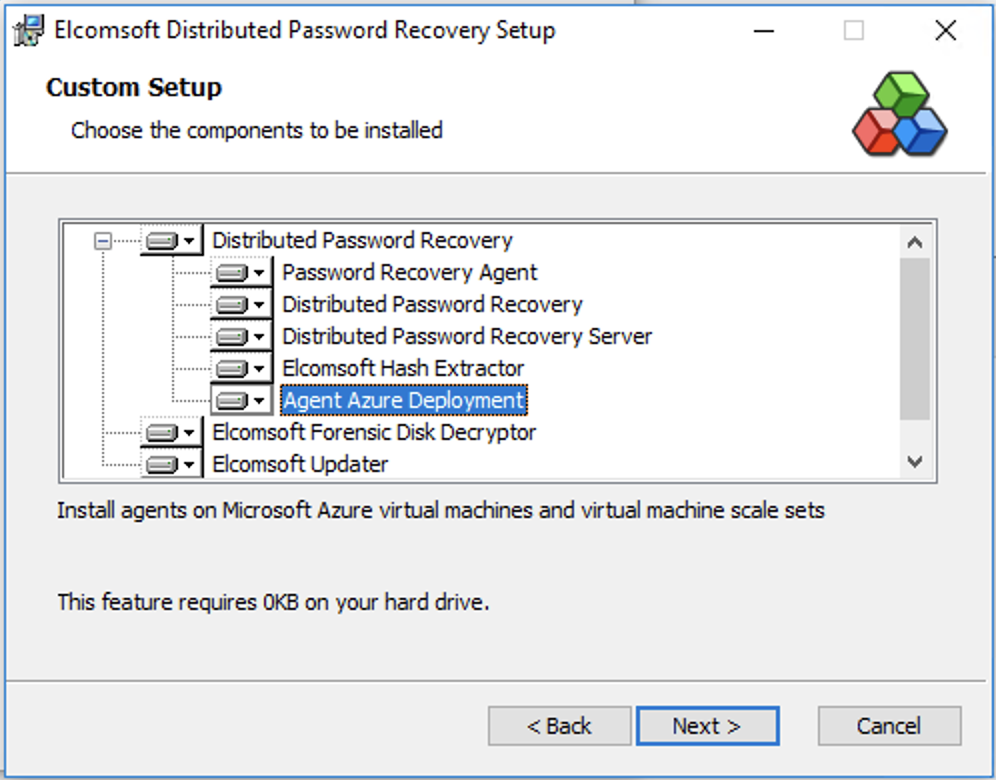
Run EDPR Console (Distributed Password Recovery) and select “Azure -> Install agents on virtual machines” from the menu. Windows PowerShell will come up with Azure Sign In window:
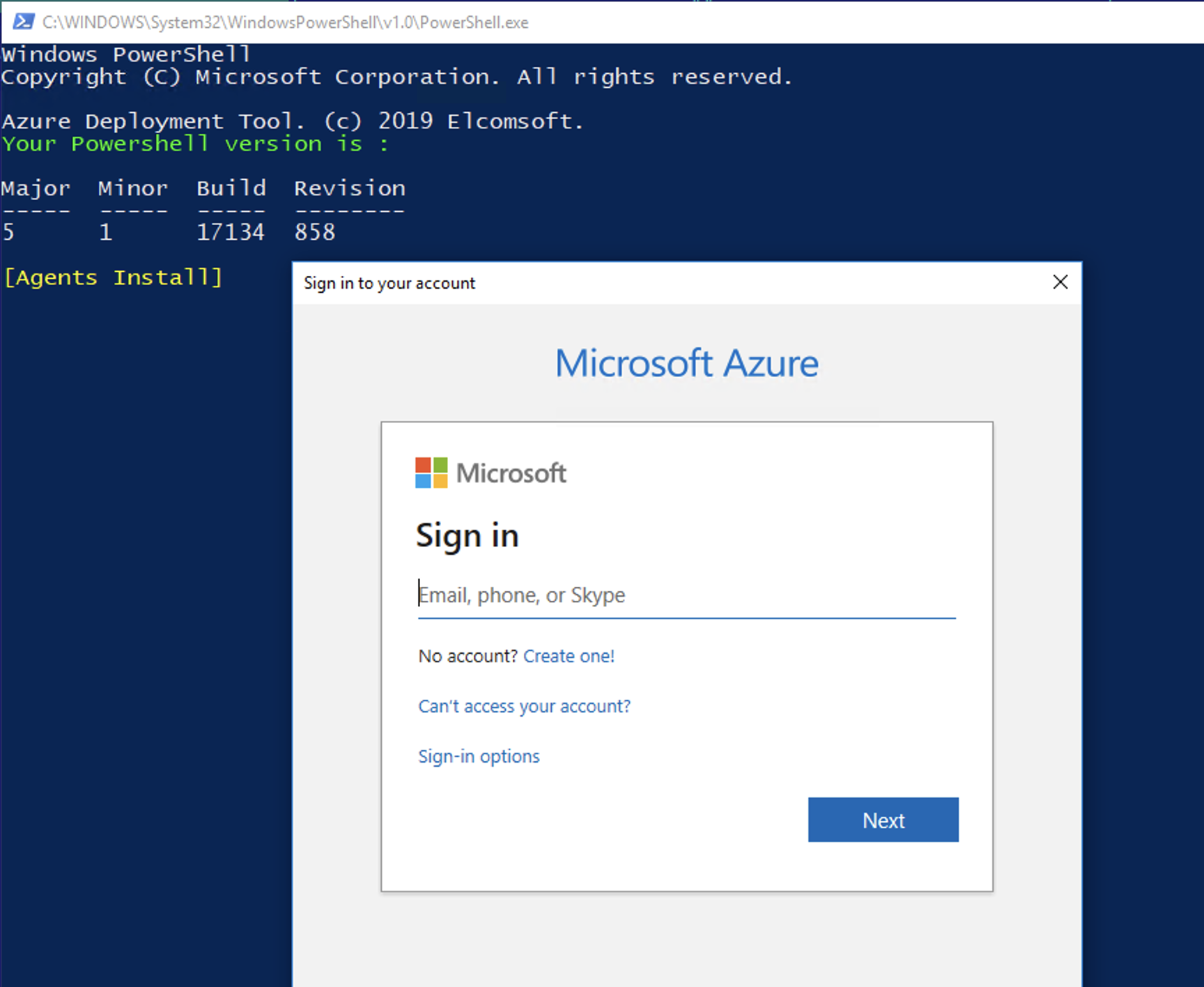
Enter your Azure login and password (if you have 2FA on your account, you will need to pass it). The next step is specifying the IP address and port number for your EDPR server. If you have a EDPR server on your computer, please ensure that the EDPR agent port (usually 12121) is properly mapped on your router. If you have your EDPR server in Microsoft Azure, you can enter the internal IP address of the virtual machine with installed server.
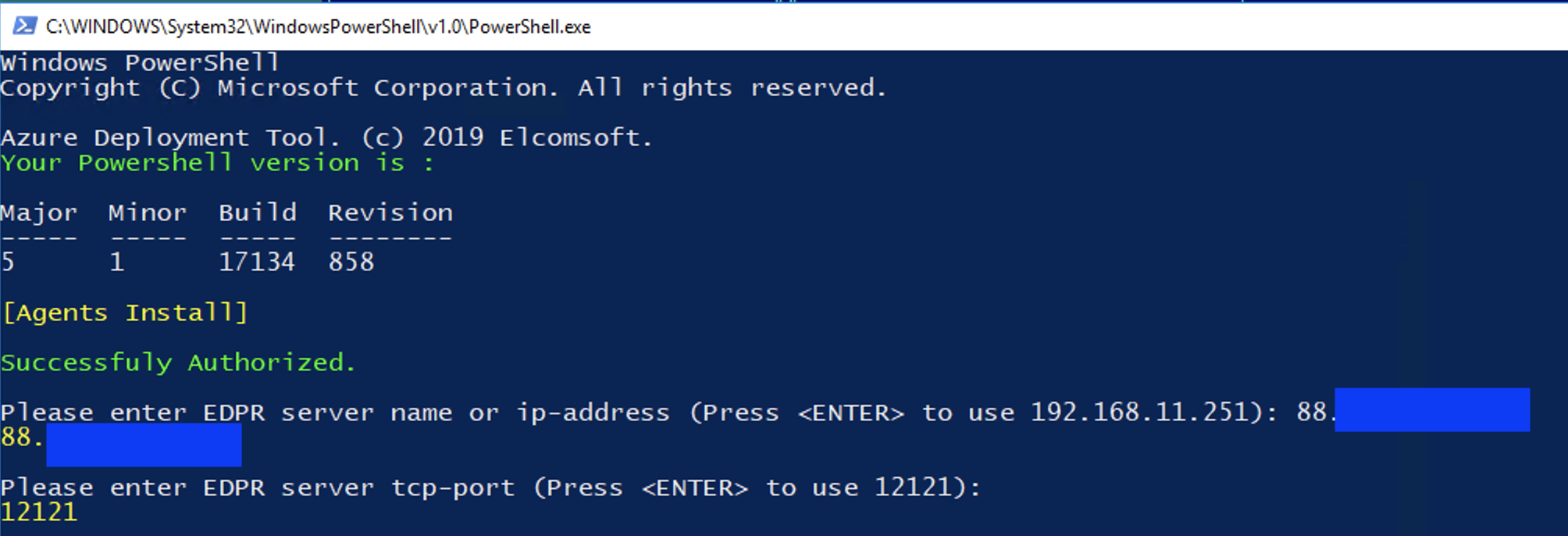
Select your Azure subscription (this dialog will not appear if you have only one subscription):
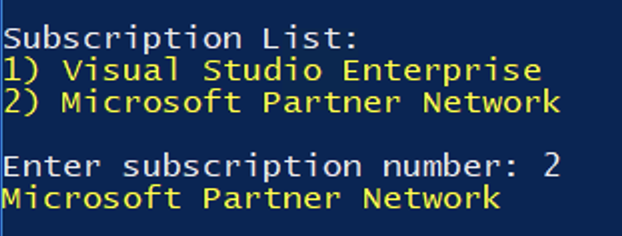
Select the resource group that contains your virtual machines:
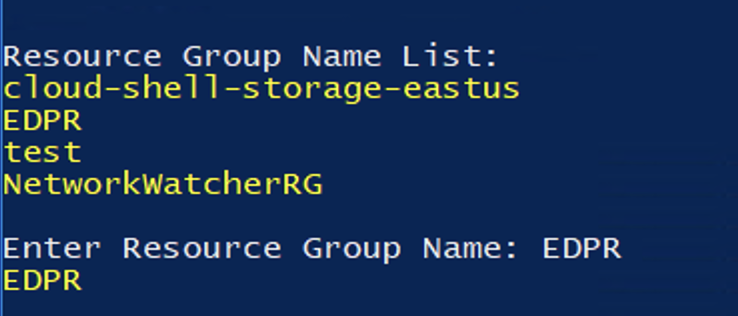
The script will show you all the virtual machines that you created in resource group. All machines must be in the “Running” state:

Press Enter, and the agent deployment process will start!
NVIDIA drivers will be installed on GPU accelerated machines:
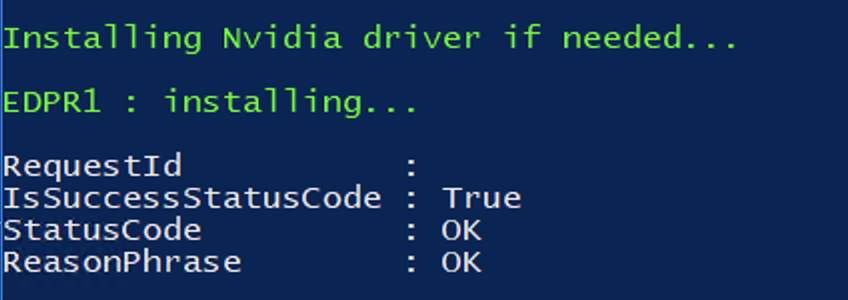
Please be patient. Installing the drivers and the agent may take some time (approximately 3-10 minutes for each machine). And finally you will see all the virtual machines in the EDPR console:
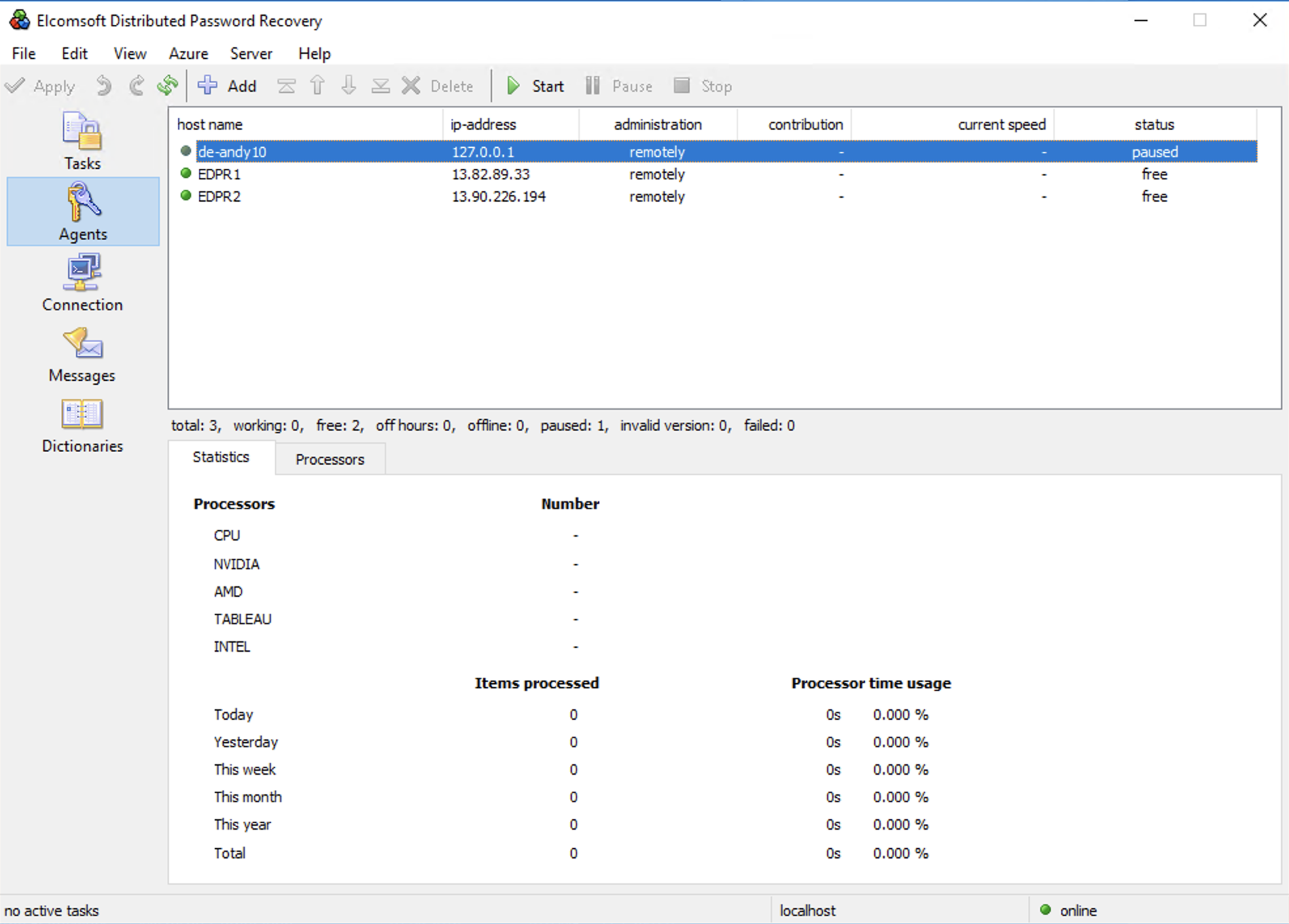
Run any password recovery task and enjoy Azure GPU acceleration!
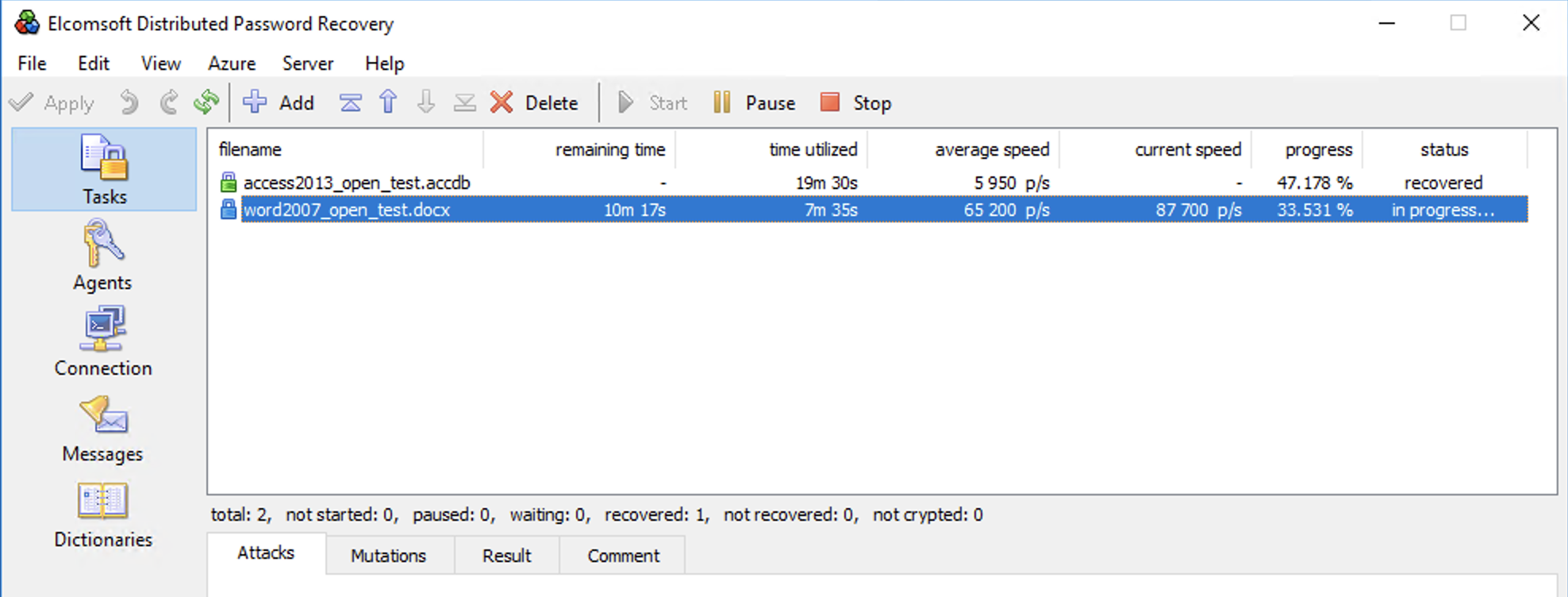
The latest version of Elcomsoft Distributed Password Recovery can be downloaded here.


















